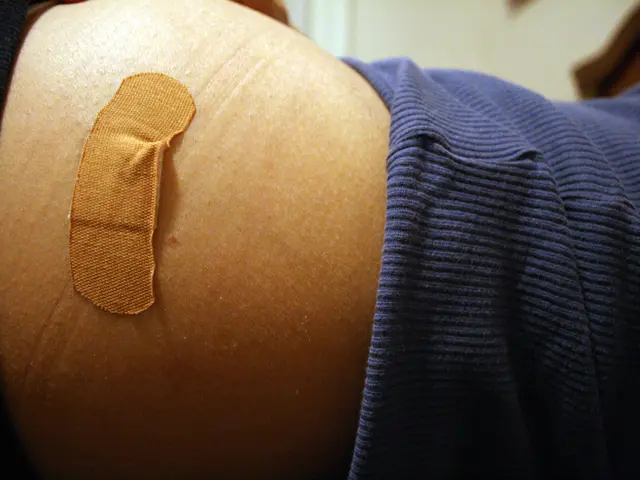Unleashing the Truth: Medical Device Design's Tremendous Trials in 2023
Exploring Obstacles Faced by the Medical Device Sector
In the bustling world of 2023, the global medical device market trots along at a whopping $773 billion, projected to expand even further (1). With a graying population, a growing reliance on therapeutic solutions, and a rise in chronic conditions, the demand for inventive medical devices shows no signs of abatement. However, like any sector, the medical device industry grapples with obstacles, many of which are compounded by the intricate nature of the devices, their life-sustaining functions, and rigorous government regulations. And while numerous industries stumbled as a result of the COVID-19 pandemic, the medical device industry took an especially heavy blow and is still grappling with its repercussions.
The Top Knotty Conundrums Plaguing Medical Device Design Today
Supply Chain Grumbles
One of the most substantial lingering aftereffects of the COVID-19 pandemic is the interruption of supply chains, which have wreaked havoc on businesses worldwide. These interruptions can cause chaos when it comes to delivering a product on time and within budget. Medical devices are precision-crafted instruments, with each part playing a specific role. If even a single component is missing or altered, the entire device could malfunction or become unfit for the market. Despite this challenge in the medical device industry, the demand continues to skyrocket.
Manpower: Vanishing Acts Unleashed
Last year, over 4 million Americans bid adieu to their jobs every month (2). This trend, often called the Great Exodus, the Big Slog, or the Great Reshuffle, has exacerbated existing medical device industry issues as numerous developers, third-party service providers, material suppliers, and manufacturers are understaffed.
Cybersecurity: Playing with Fire
Much like previous years, one of the medical device industry trends for 2023 is the increasing connectivity of devices, whether via wireless, the internet, or the cloud. With this connectivity comes a heightened risk of network breaches, which could have catastrophic consequences. Regulatory bodies worldwide, particularly in the U.S., have emphasized the gravity of cybersecurity in their approval processes. In an analysis of recalls dating from FY 2003 to FY 2012, software glitches dethroned design concerns as the leading reason for FDA medical device recalls (3).
Triumph Over Medical Device Industry's Trials
To conquer these present medical device hurdles, an emphasis on precise planning and clear communication is essential to success. These elements are crucial to ensure external resources align and are in place early in the development process, helping combat supply chain or manpower issues. They are also indispensable in identifying the necessary standards and requirements to recognize and execute comprehensive risk mitigation strategies. They also pave the way for a harmonious regulatory strategy that engages authorities promptly, fostering a greater understanding of development and recognition and reduction of medical device regulatory compliance roadblocks later on.
A vital key to overcoming medical device industry challenges is to collaborate with experts who can help enhance planning, communication, and execution. These industry veterans will steer you towards incorporating flexibility into your design, guiding you in choosing the most opportune path. Our team at Sterling Medical Devices, champions of the industry since 1998, is dedicated to assisting our clients in resolving medical device design and development challenges – from conception to completion. From full lifecycle product and software design and development, to services for testing, regulatory submissions, and project management tools like our Polarian consulting, we have the proficiency and expertise to help you adapt to today's demanding landscape. So, reach out to us today.
(1) https://www.bloomberg.com/news/articles/2023-01-01/global-medical-devices-market-to-be-worth-820-billion-by-2026
(2) https://www.cnbc.com/2022/11/03/the-great-resignation-fast-facts.html
(3) https://www.statnews.com/2014/04/17/medical-devices-recalls-software-faulty-design/
Enrichment Data:
Overall:
Currently, medical device design faces several pressing challenges, including supply chain disruptions, labor shortages, and cybersecurity concerns. Here are some of these issues in detail:
Supply Chain Challenges
- Component Sourcing: Maintaining access to critical components for the medical device industry can be a challenge due to the globalized nature of its supply chain. Disruptions can occur due to geopolitical tensions, natural disasters, or unforeseen events.
- Offshoring and Outsourcing: Offshoring manufacturing to regions with lower costs can introduce risks related to quality control and regulatory compliance.
- Custom Software and Technology: Many medical devices require custom software and technology, which can complicate the supply chain further due to the need for specialized components and expertise[1].
Labor Shortages
- Skilled Workforce: A highly skilled workforce, including engineers, designers, and technicians, is essential for the medical device industry. However, labor shortages in these areas can slow down innovation and production.
- Training and Development: Investing in continuous training and education is crucial for keeping up with advancing technologies and evolving regulatory requirements.
Cybersecurity Concerns
- Data Security: Ensuring the privacy and security of patient data is a primary concern when it comes to cybersecurity and medical devices.
- Vulnerability to Attacks: Medical devices can be vulnerable to cyberattacks, raising the possibility of compromises to patient safety and confidentiality.
Other Challenges
- Regulatory Compliance: Navigating complex and evolving regulatory environments globally is a significant challenge for medical device manufacturers.
- Innovation and Affordability: Balancing innovation with affordability while meeting global health priorities is critical, especially in developing appropriate technologies for universal health coverage[5].
Addressing these challenges requires a comprehensive approach, encompassing improvements in supply chain resilience, investments in cybersecurity, fostering a skilled workforce, and ensuring regulatory compliance.
[1] https://www.ncbi.nlm.nih.gov/pmc/articles/PMC3381803/
[5] https://www.who.int/publications/i/item/universal-health-coverage-what-are-the-challenges
- The global medical device market, projected to reach $820 billion by 2026, faces complex challenges such as supply chain disruptions, labor shortages, and cybersecurity concerns.
- Component sourcing, offshoring, and the need for custom software and technology are particularly challenging aspects of the medical device industry's globalized supply chain.
- In 2023, the rise of connected medical devices intensifies cybersecurity concerns, with network breaches posing catastrophic consequences.
- To address these challenges, a focus on comprehensive risk mitigation strategies, regulatory compliance, and collaboration with industry experts is essential.
- Expert assistance can help enhance planning, communication, and execution, steering companies towards incorporating flexibility in design and executing opportune paths.
- The medical device industry requires a multi-faceted approach to tackle challenging issues like supply chain resilience, cybersecurity, skill development, and compliance, while maintaining a balance between innovation and affordability.








